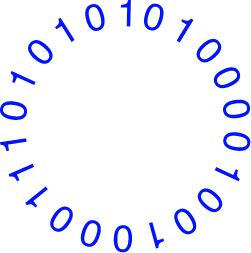Raiyaan Serang (BGV Associate 2019), together with Yash Hemaraj, Anik Bose, Eric Buatois, and Amir Nayyerhabibi (BGV Partners), shares insights around why edge computing developed in this first of a two-part series on the space.
Why Edge Computing?
In many ways, traditional cloud computing was built to serve the large enterprise by providing shared, centrally distributed resources that can be accessed by consumers on-demand. This request-response format evolved out of the client-server architecture that formed the foundation for the cloud. Edge computing shifts the focus onto the end devices themselves and places those resources physically closer to where they are needed. In doing so, edge computing solves problems in 4 key edge domain areas that today’s typical cloud model alone is not well suited to solve for: bandwidth, connectivity, data synchronization & consistency, and latency. When more than one of these key problem areas need to be addressed concurrently, edge computing will most likely serve as a preferred solution to a standalone cloud or separate, localized computing (where back and forth interaction with the core is not required).
Bandwidth
As the number of connected devices increases and more sensors are deployed, the volume of data generated will skyrocket to levels the typical cloud computing model will be ill-equipped to process. Enterprises already dedicate a significant portion of their budgets to passing data to and from their core data centers, and these costs will only increase as the volume of data increases. With artificial intelligence applications and use cases on the rise, storing and processing every single piece of data at the core will become slow, more costly, and inefficient, resulting in a shift of this responsibility to the devices themselves. Edge computing will be relied upon to intelligently manage data bandwidth constraints.
Connectivity
Traditional cloud computing enables communication between numerous clients and servers. Today’s content delivery network (CDN) systems were designed to centrally push out large amounts of data. Edge computing will take that a step further and enable local communication between multiple, disparate devices in addition to communication with the core. This mix of intra- and inter- connectivity and the bidirectional movement of data will require a new architectural framework that is more event driven rather than request-response driven and will result in a mesh network that “listens” for changes before sending information to the network. This ecosystem must be sophisticated enough to operate under scenarios where access to the core is unreliable or intermittent, implying that edge devices must be smart enough to handle both power and connection outages. The frequency at which these devices must communicate with the core will depend completely on the use case. Edge computing will be the preferred solution to handle today’s connectivity problem.
Data Synchronization & Consistency
With the immense amount of data being created, processed, and consumed by billions of connected devices communicating with each other and with the core, identifying a single source of truth will prove to be a challenge for today’s cloud computing model. The data generated across each device will have to be considered for its actuation value, the benefit of acting upon the data immediately, and its concurrency value, the benefit of being able to distinguish who was truly “first in line” with accuracy. As edge networks are deployed, categorizing this data after first identifying the specific use case will drive what is shared to other devices vs. what is shared in aggregate to the core.
Latency
All data has a time value and can be represented in part by a decay function. Data will only be useful for a specific period of time before it becomes stale and outdated by newer information. For use cases where local data must be stored, processed, and consumed and decisions must be made in real time, low latency edge solutions will be able to deliver bidirectional data on an order of magnitude of 50x faster than what the cloud can handle today.
